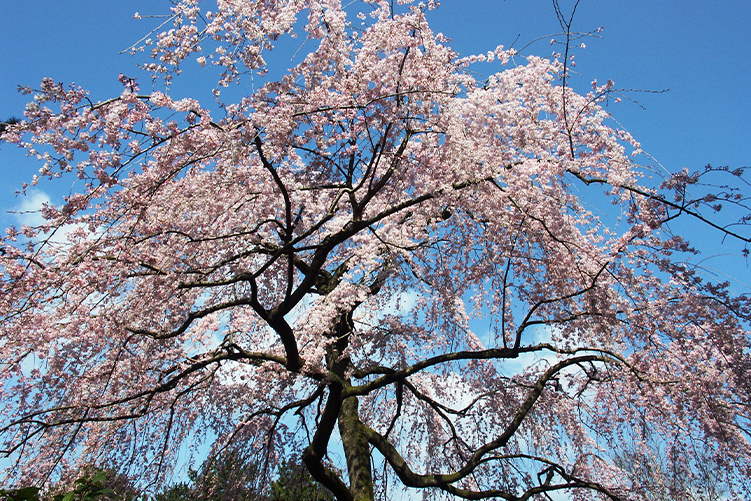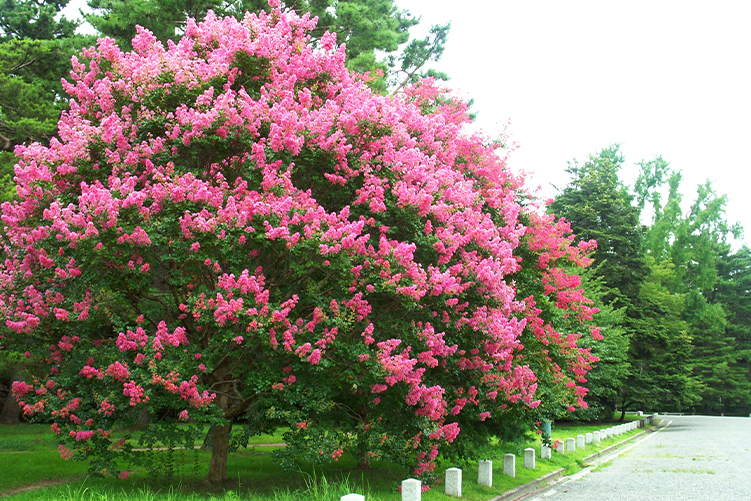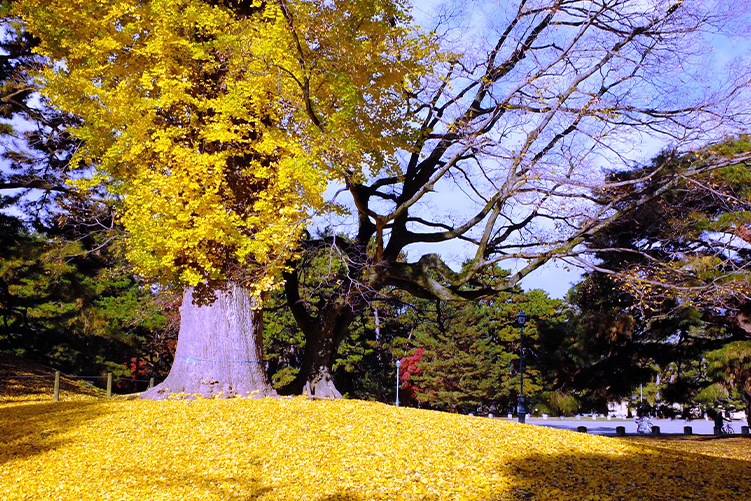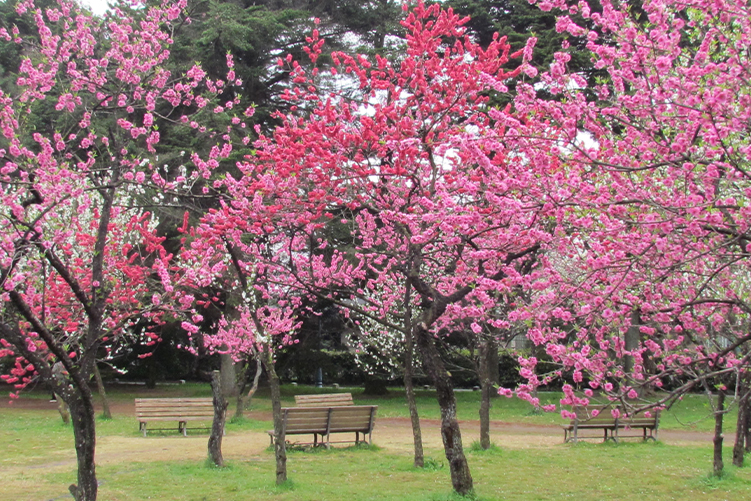A sanctuary of nature unique to Japan brings seasonal changes
Located near the center of Kyoto Basin, Kyoto Gyoen National Garden is an alluvial area created by the repeated flooding of Kamo River that flows south through the eastern part of the basin. The land slopes gently from an elevation of 55 meters at the northern end to 45 meters at the southern end. The garden looks like a lush green island floating in the sea of the city. However, history reveals that this natural vegetation is not the same as the original vegetation. The present greenery has been cultivated through planting over many years, dating back to the Kyoto Gyoen Garden—Preservation Project of the Meiji era (1868–1912).
Some 150 years after the first cultivation of plants, the garden is now a diverse and rich forest. It changes color every season creating a delightful sight, including Itozakura cherry trees (weeping cherry trees) at the site of the Konoe Residence and Japanese cherry trees, plum trees, peach trees, and maple trees near the Demizu Stream. The trees at Kyoto Gyoen are said to number around 50,000. The garden also contains more than 500 species of plants, including colonies of Kansai dandelions (Taraxacum japonicum) in the grasslands.
More than 100 species of wild birds have been sighted, including northern goshawk (Accipiter gentilis) that use the area as a feeding ground and brown hawk-owl (Ninox scutulata) that use the area for breeding. In addition, more than 50 species of butterflies and over 400 species of mushrooms, including the pinecone mushroom (Auriscalpium vulgare) that decomposes pinecones, have been spotted, making for an amazingly rich natural habitat.






